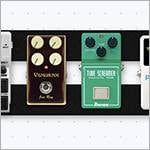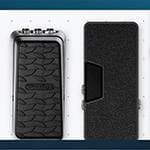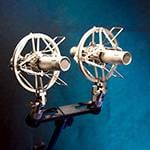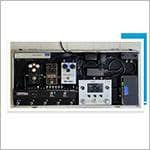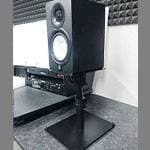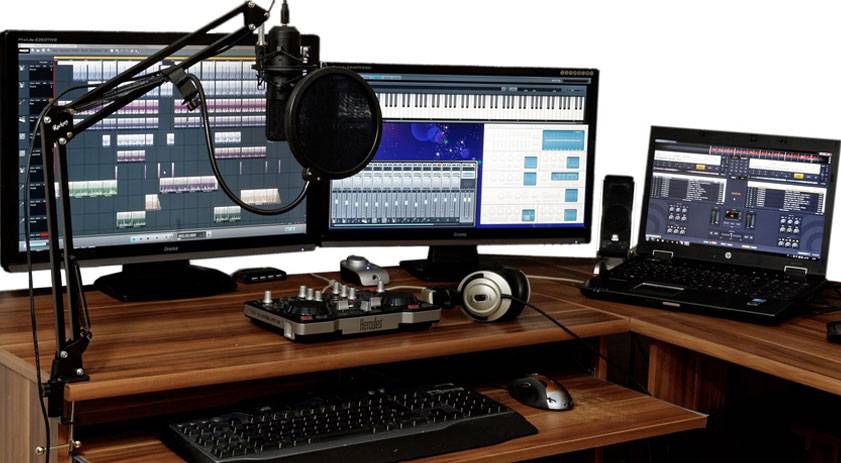
Recently, it seems there’s a DTM (Desktop Music) boom going around. Necessary equipment has become relatively easy to get, and more and more people want to record their singing at home. However, many beginners who try home recording struggle with problems like the sound being muffled or the volume fluctuates too much. So, here are some tips to dramatically improve the sound quality of your home-recorded vocals.
■ Two Factors That Degrade Sound Quality
The main factors that cause vocal sound quality to drop are the following two:
- The distance from the microphone is too close or too far
- The gain is set too high
Before explaining these two in detail, let’s first talk a little about the recording environment.
■ Prerequisites for the Recording Environment
No matter how many recording techniques you learn, you won’t get good sound if your equipment isn’t good.
○ Use a good microphone!
A microphone I recommend is the AKG P220.
Among condenser microphones in the 10,000-yen range, it has outstanding sound quality and comes with a full set of accessories.
AKG / P220 Condenser Microphone
What Is a Condenser Microphone
○ Use a Reflection Filter!
When recording vocals at home, the sound of your voice can bounce off walls and other surfaces, creating what’s called “room reverb”. To minimize this as much as possible, use a reflection filter, or a tool that reduces sound reflections.
The CLASSIC PRO CAR900 is recommended.
CLASSIC PRO / CAR900 Reflection Filter
○ Use a Pop Filter!
Some people feel that they don’t need a pop filter because they don’t really understand its effect, but this is an extremely important tool, so make sure to use one.
Using it prevents popping sounds caused by consonants like “P” and “S”, and it will dramatically improve the sound quality. It’s also useful later when setting the proper distance of the microphone, so it’s definitely worth having.
I recommend the K&M 23956 Pop Guard.
It can be mounted securely, making it perfect for home recording.
■ The Distance from the Microphone Is Too Close or Too Far
Now, let’s get to the main topic. Many home-recording beginners try to record their voice as loudly as possible and end up getting too close to the microphone.
Most microphones are cardioid (unidirectional) types, which pick up sounds mainly from the front. With these microphones, the closer you get, the more the low frequencies are emphasized. As a result, the sound becomes muffled and unnatural, which is far from the ideal natural tone you want in a recording.
On the other hand, what happens if you record from too far away? Recording from a distance captures a lot of the room reverb that I mentioned earlier, making it difficult to edit and process the recorded vocals later.
○ How Many Centimeters Should You Be from the Microphone?
It’s recommended to record from a distance of about 20 cm from the microphone.
○ Use the Pop Filter as a Reference!
I myself use the pop filter as a guide by setting it about 10 cm away from the microphone to help measure the proper distance.
After setting up the pop filter, position your body about 10 cm away from the pop filter. By doing this, you’ll naturally maintain a distance of about 20 cm from the microphone.
○ Another Problem Caused by Being Too Close to the Microphone
When recording, the closer you are to the microphone, the louder the sound will be recorded. This might seem obvious, but it also means that even small movements toward or away from the mic can cause large variations in the recorded volume. If you have to constantly worry about your movement while singing, it becomes difficult to put genuine emotion into your performance. By keeping the proper distance from the microphone, you can sing freely without such concerns.
■ The Gain Is Set Too High
The second factor is setting the gain too high. If you play guitar, you might already be familiar with the term “gain” — it refers to the input volume level. The higher you set the volume, the louder the sound becomes.
In this case, we’re talking about the gain on the audio interface that your microphone is connected to.
Many beginners tend to raise the gain too much because it feels better to record at a high volume. However, when it comes to recording, recording at a high volume is not what’s important. This is a crucial point to remember.
First, while checking the volume meter on your DAW, try singing the chorus part of your song. Adjust the gain on your audio interface so that the meter does not exceed the peak level.
○ What’s the Proper Gain Level?
As a guideline, it’s best if the meter reaches about halfway up the scale overall.
Some people might think, “Isn’t that volume too low to be usable?” However, you can always make the recorded sound louder later in your DAW.
What matters most is recording with good sound quality, not recording at a high volume.
When I first started home recording, I often raised the gain too much — it felt good while recording, but when I listened back to it later, the sound was harsh or muffled, which caused me a lot of frustration.
■ Summary
To summarize today’s content, here’s what we covered:
Tips to Improve the Sound Quality of Home-Recorded Vocals…
- Keep a distance of 20 cm from the microphone!
Getting too close will result in a muffled sound.
Being too far will capture “room reverb,” making post-production difficult. - Set the gain so that the meter reaches about halfway…
Do not raise the gain so high that it exceeds the peak.
You can always increase the volume later in your DAW.
※ These settings do not apply to every situation. Please use them as a guideline when you’re unsure how to set up your recording.
■ For Those Who Want to Record Even Better Sound…
These books introduce many vocal recording tips that I couldn’t explain all of it here. By gaining more knowledge, you’ll be able to make your singing sound even more appealing. If you want to take your home recording to the next level, be sure to check them out.
First Time Recording — Tsunenobu Mitsuda
The “sound & person” column is made up of contributions from you.
For details about contributing, click here.





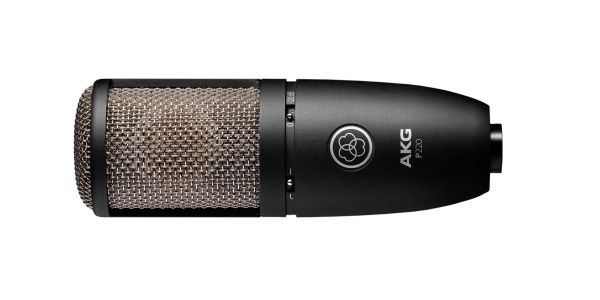
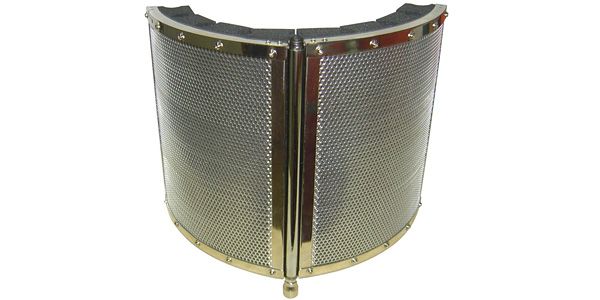
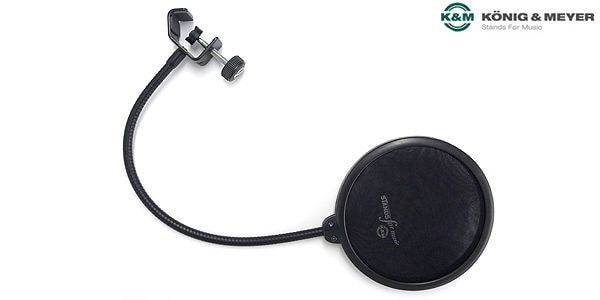




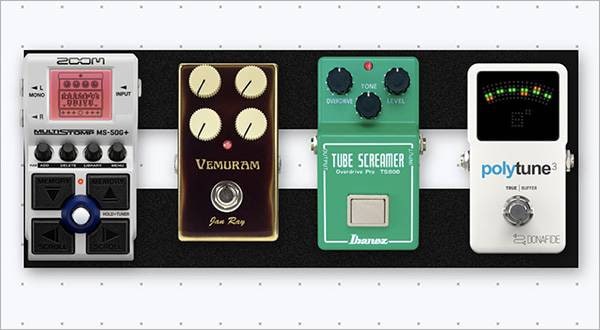
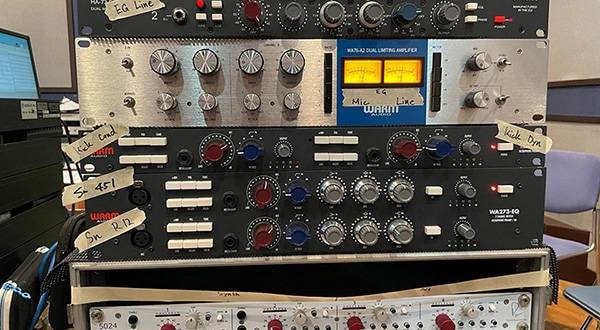
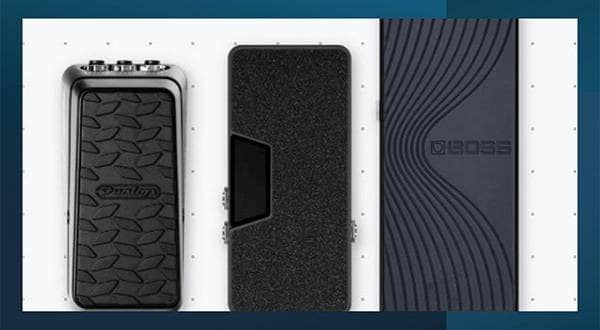
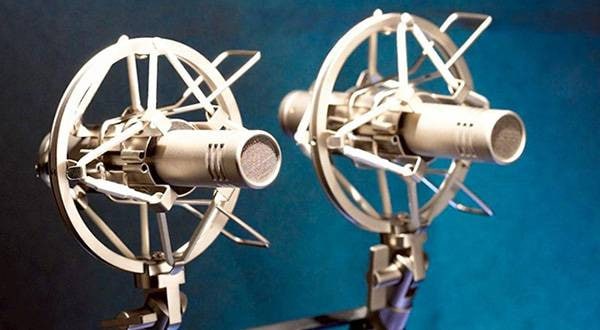

![[Building Your Equipment] Assembling DTM Gear For Under A 100,000 Yen Budget!!](/contents/uploads/thumbs/5/2021/11/20211116_5_15163_1.jpg)
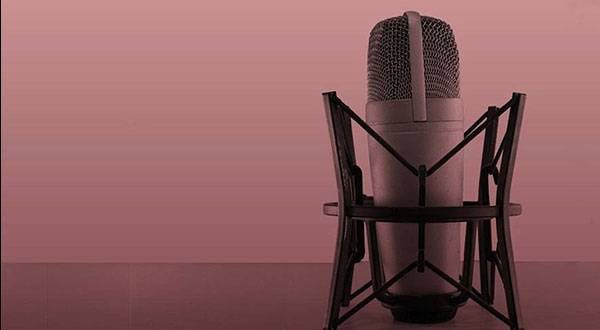

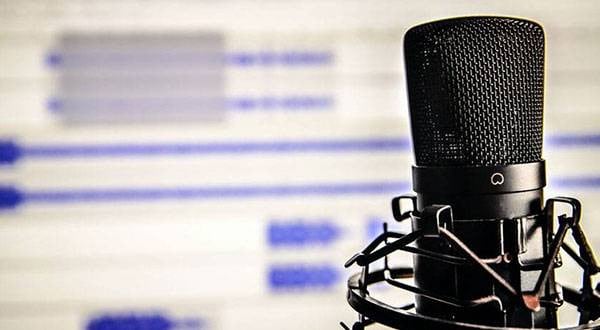

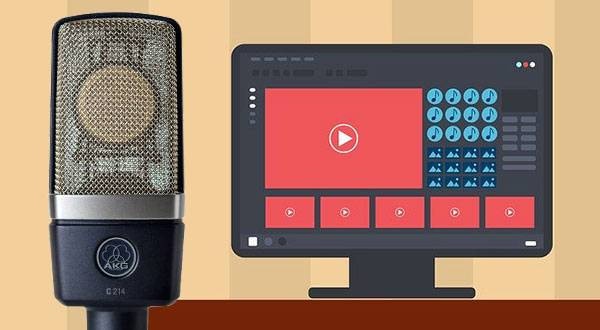
 AKG マイクセレクター
AKG マイクセレクター
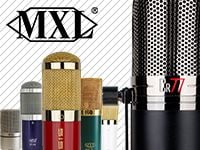 MXLマイク購入ガイド
MXLマイク購入ガイド
 RODEマイク比較レビュー
RODEマイク比較レビュー
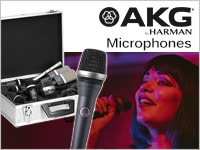 AKG マイク特集
AKG マイク特集
 AUDIXマイク購入ガイド
AUDIXマイク購入ガイド
 RODEマイク購入ガイド
RODEマイク購入ガイド
